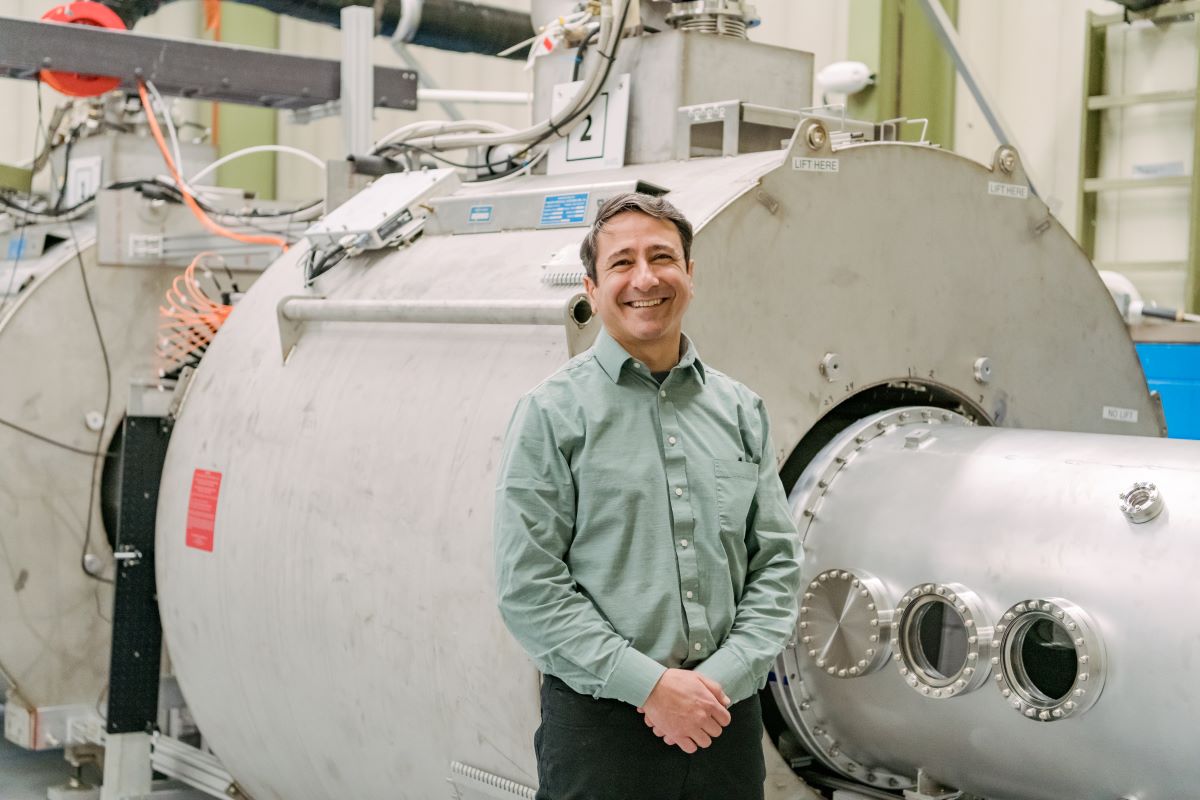The American Physical Society, an influential professional society founded in 1899 to “advance and diffuse the knowledge of physics,” is highlighting the fusion research of UMBC’s Carlos Romero-Talamás at its largest annual meeting, held March 3 – 8 in Minneapolis this year. A short film showcasing Romero-Talamás and colleagues’ work on a relatively simple and cheap approach to fusion power will be broadcast on APS TV, a channel that plays on screens around the meeting venue, in selected local hotels on dedicated TV channels, on the virtual meeting platform, and on YouTube.
Fusion, which is the reaction that powers stars, releases enormous amounts of energy when light atomic nuclei combine to form heavier ones. Initiating, sustaining, and controlling the process in a way that allows humans to generate clean, safe, and near limitless commercial power has long been a goal in the physics community and beyond. The film, created by the international film and broadcasting company WebsEdge, brings viewers into the lab where Romero-Talamás, alongside colleagues and students from UMBC and the University of Maryland, College Park, are questing to bring this celestial energy down to Earth.
Romero-Talamás’s group is exploring a promising alternative to traditional fusion power approaches, using equipment that is smaller, cheaper, and more simple to operate. The group’s current experiments are going well, and they are working to attract public and private investment to build a next-generation machine that could be fitted to produce more power than it takes to run, a key milestone on the road to commercial fusion power.
“The APS March Meeting is an opportunity to connect and promote our research with the largest physics audience in the world,” Romero-Talamás says. The video aligns with the lab’s work to raise their visibility and attract additional students and researchers interested in fusion energy. “At the levels of effort that we will require for the next step in our quest for fusion energy, we will need to grow quickly,” Romero-Talamás says.
Learn more about fusion research at UMBC in this interview with Carlos Romero-Talamás and in his GRIT-X talk.

